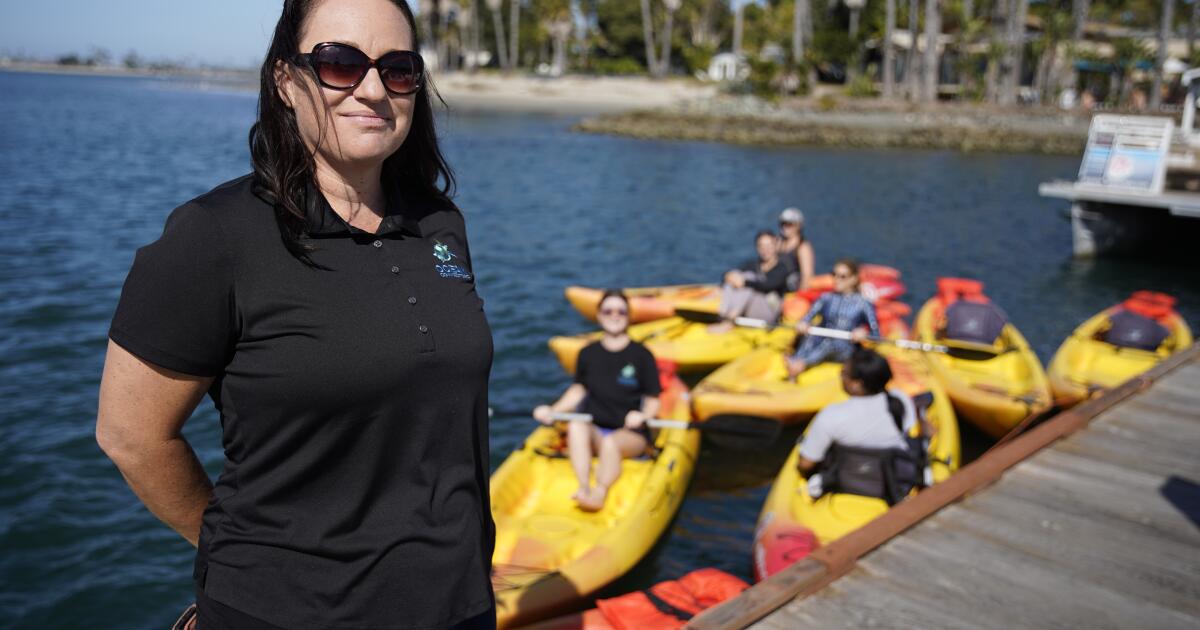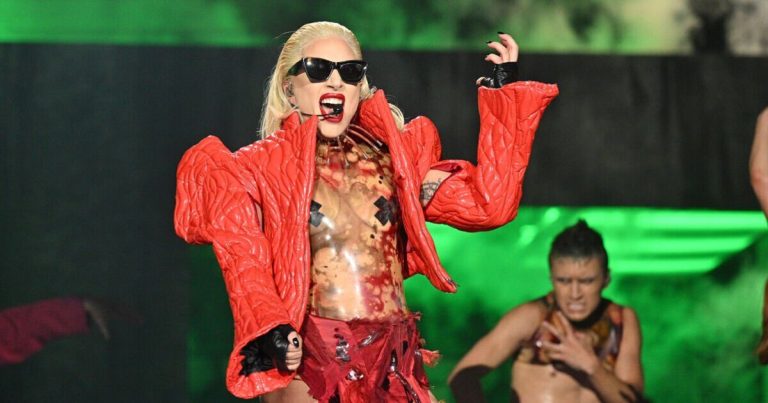

As a kid, Janaira Quigley had a personal mission: grow trees everywhere she went. A hippie at heart, she was always interested in science, and her family had their own fruit trees in their yard, so she wanted to scatter seeds that would grow into trees lining her walk to school, in the spaces outside her neighborhood, and beyond.
“There was a fruit fly problem, and our entire county would get ‘malathion sprays’ overnight. The communication about this poison spray was terrifying: bring your pets inside, cover all outdoor surfaces, don’t eat the fruit or drink groundwater,” she recalled. “I remember thinking that this had to be devastating for the wildlife. I would try to save all of the animals that I could by bringing insects and worms inside on the nights of the sprays. This was a turning point for me and where my conservation work began.”
She would go on to study environmental science, international business, and nonprofit management, leading her to her current work at Ocean Connectors, where she serves as executive director. The nonprofit began in 2007 to teach elementary school children about green sea turtles nesting in San Diego Bay. Today, they provide educational programs for thousands of children in the South Bay and in Nayarit, Mexico, to connect kids in underserved coastal communities with their environment.
Quigley, 44, lives in Talmadge and has two college-age sons, and two rescue dogs. She took some time to talk about ocean conservation, opening kids up to the possibilities for protecting their environment, and her favorite nature hangouts along the coast.
Q: When you’re talking to someone who knows very little about what, exactly, ocean conservation means and entails, what do you say to them to help them understand?
A: I say a few things. First, people protect what they love. If your only experience of the coast is industrial, you won’t see its actual value; but if you are able to see the animals that make it their home and have fun on the water, your perspective can change. Our field trips are meant to expose students to this ecosystem in a fun way, so that they will want to preserve it.
Q: Why is this kind of environmental work, specifically along the coastline, important to you?
A: I grew up in Southern California, and the beach was a big part of my childhood. I had a set of books specifically about marine mammals and knew that I wanted to work with them as an adult (specifically the Narwhal, which is still on my bucket list). As I learned more about environmental science, I realized how dependent we are on the ocean’s health. I think of it as the blood or circulatory system of our planet.
Q: In an interview with SD Voyager last year, you mentioned the lack of access to environmental education for the students your organization works with in National City and in Nayarit, Mexico. What’s contributing to this lack of environmental education?
A: There are several factors. Transportation and language are prevalent barriers, but it is more than that. In National City, the bay is utilized industrially. There is very little park and coastline access. In Nayarit, tourism is king. Hotels operate the coastlines and lack of infrastructure renders the coastlines polluted and utilized for waste disposal. It is especially disheartening when you realize that these areas are the calving grounds for gray whales and nesting grounds for green sea turtles.
What I love about Talmadge…
Talmadge has a small-town feel, but it is in the middle of the city. We are 10 minutes from everything: downtown, North Park, the beach. The residents have diverse backgrounds, and everyone is friendly and says hi when we walk our dogs. We gather at the roundabout in the neighborhood center for holidays and mini-parades. We also have a walkable neighborhood pub, where everyone knows each other’s names.
Q: And what are some examples of how your organization is filling those gaps for students?
A: Our organization provides educational experiences, field trips, and activities for students, free of charge. We provide transportation and bilingual curriculum. We also host events where community members can take an active role in restoring and protecting the coastline. We conduct cleanups via kayak in wetlands and areas that aren’t accessible by foot. Plastics are removed from nesting grounds, and students can see the effect firsthand.
Q: Can you talk about a couple of issues currently being prioritized in the organization’s work, in terms of specific environmental issues along the coast? Issues for specific marine animals?
A: Right now, we are developing an ocean acidification unit for eighth-grade students. They are collecting local data on ph and carbon levels on their local coastline. They are looking at differences before and after storms, along the Port of San Diego’s “Living Shoreline” and “Oyster Balls,” which are projects that are intended to filter the water and improve biodiversity. They are also learning about the effects of microplastics on ocean and human health.
Q: Where are some of your favorite locations along San Diego’s coastline to visit, hang out, unwind?
A: Fiesta Island and Dog Beach in Ocean Beach are my top two. I can take my dogs and play all day! I love watching how excited the pups are to get outside and explore. When my kids were little, we used to visit La Jolla Cove. They could play in the waves, check out inter-tidal zones, and see the sea lions, all in one spot. My grandmother is Indigenous and instilled in us the practice of grounding, so if ever I feel unbalanced, I go straight to the beach and take off my shoes. Problems tend to shrink when you have bare feet in the sand.
Q: What’s been challenging about your environmental work?
A: It always feels like an uphill battle. I have zero interest in politics, but it seems to be the field that has to be played on. Also, I come from the corporate world, so I understand that money talks, and until policy changes, the right thing and the easy/cheap thing don’t always line up. Lastly, working in the nonprofit world, the focus on funding tends to take priority. It is not easy to find the balance between funding the work and engaging in the work.
Q: What’s been rewarding about this work?
A: I only get one shot at a life on this planet, and I want to use it to protect and preserve what my sons will need to raise healthy families.
Q: What has this work taught you about yourself?
A: It has taught me that there is so much more that I could’ve done this whole time. I got caught up in the rat race, but there is no sense in worrying about that; I can only control what I do moving forward. I have also learned that there are so many wonderful people doing amazing work in this space. It gives me a lot of hope.
Q: What is the best advice you’ve ever received?
A: I can’t choose just one. First, don’t spend your time chasing butterflies. Instead, tend to your garden and the butterflies will come.
Don’t seek work-life balance. Balance implies opposing forces. Instead, seek work-life harmony. They don’t need to be separate; they should align, resonate, and work in concert.
If you want money, ask for advice. If you want advice, ask for money.
Q: What is one thing people would be surprised to find out about you?
A: I think people might be surprised to learn that I didn’t finish my bachelor’s degree until I was in my 30s. I feel privileged that I was able to return to school, and I value it so much more now because I was navigating the corporate world without the fundamental business knowledge and the School of Hard Knox can be tough!
Q: Describe your ideal San Diego weekend.
A: My ideal San Diego weekend starts with a Friday happy hour. What better way to catch up with friends and celebrate? It always includes a hike or beach trip with the pups and working in my garden. On special occasions, I like to try new restaurants or listen to live music (Humphrey’s is my favorite). If it is football season, I have to catch a Seahawks game.




